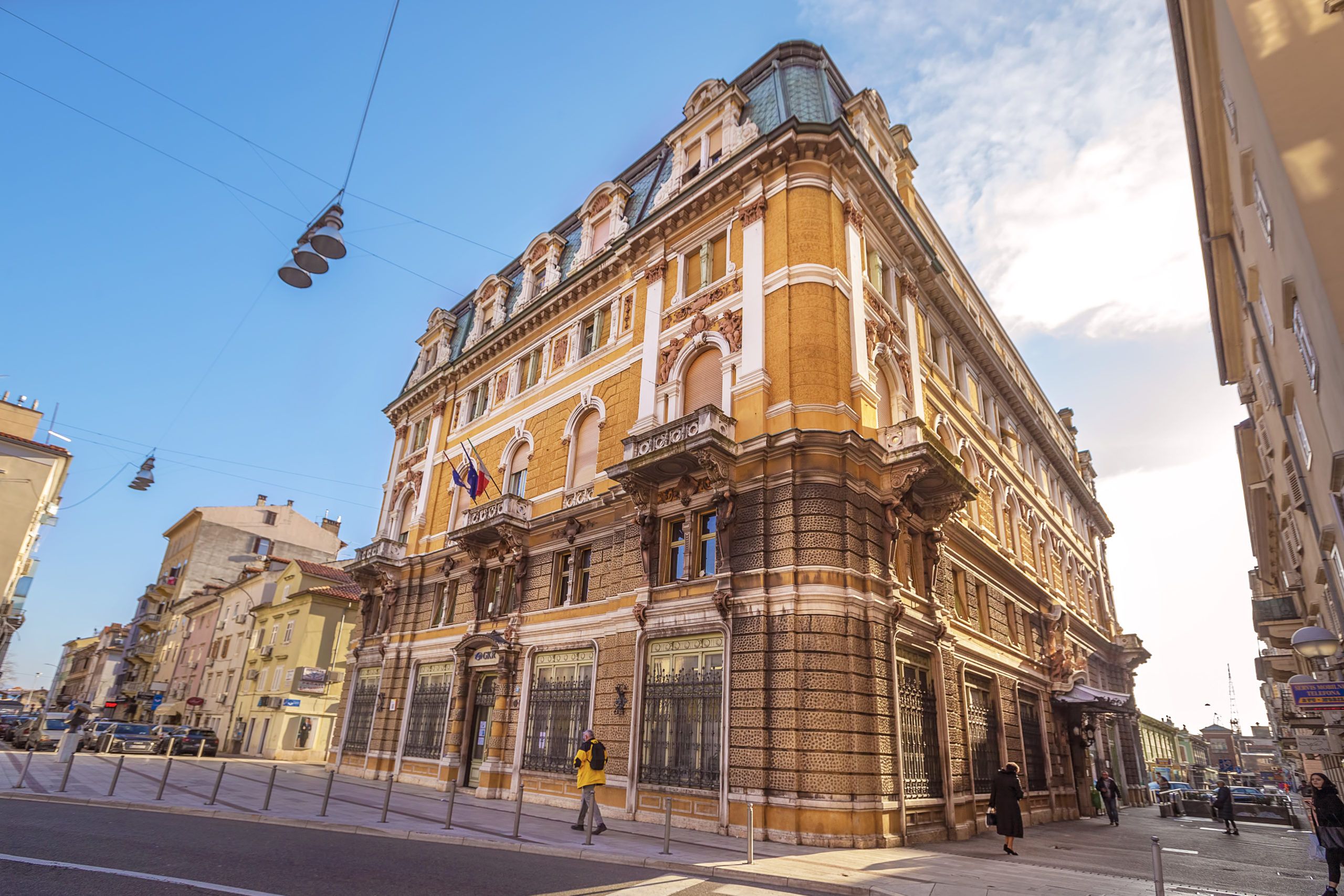As Rijeka has always competed with the port of Trieste, this meant it should have its own Palazzo Modello, a model of the city’s monumental palaces built in the style of late Historicism, which today is the seat of the Rijeka City Library and the Circolo italiano di cultura. The project was designed by the famous Viennese architects, Fellner and Helmer, according to the model of French mansard roofs and combining the Renaissance and Baroque styles of the Parisian Louvre.
This building initially housed the headquarters of the Rijeka’s Savings Bank and the Casinò Patriottico, which was actually the name of the Hungarian and Rijeka Friendship Association, a popular form of cultural institutions in the 19th century. The architects made an effort to create a building with luxurious front facades, especially that looking towards the theatre and market pavilions. The sculptural part of the facade was carried out by Rijeka sculptor Ignazio Doneghani and the rich ornaments made of wrought iron are the work of Matija Dumčić. Large amounts of money were spent on interior furnishings, beginning from the stairway to the coffee saloon and tavern where each booth was decorated with oriental style varieties in Turkish, Arabic, Persian and other such styles.
The building was built in 1882 on the site of the demolished Adamić theatre as the stone from 1897 testifies on the front facade, which was put there by Adamić’s grandson, Rijeka’s mayor, Giovanni Ciotta. The premises of the Rijeka City Library and Circolo italiano club are open to visitors.

